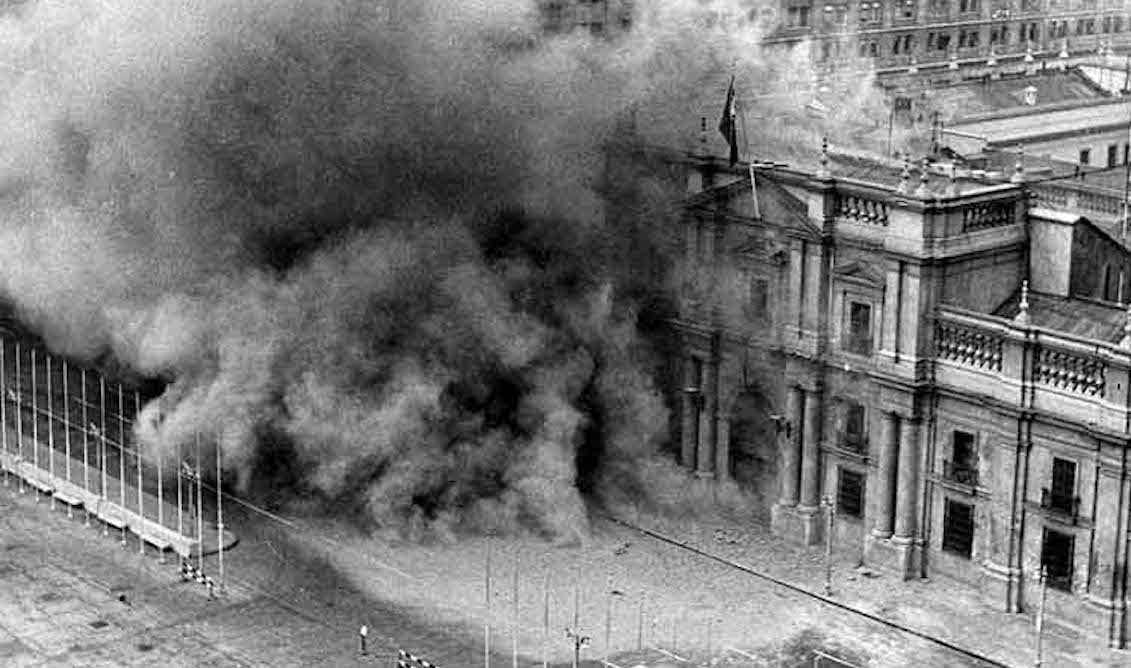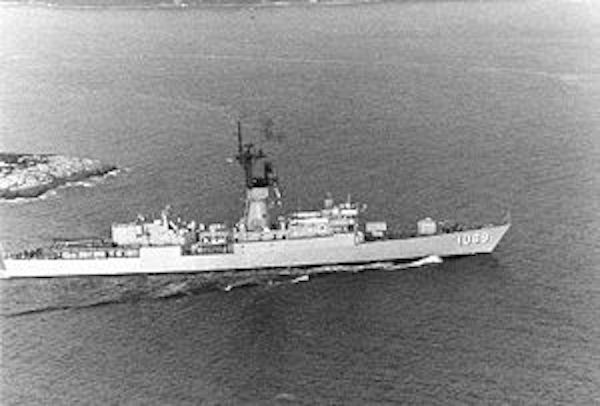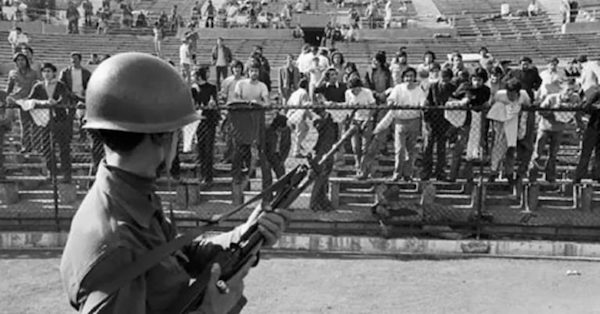
The other 9/11
A date that has gone down in history for its violence, the symbolism of hatred it brought with it and the dark years that followed. When we talk about…
September 11 has become a dark date for Americans after a group of Al Qaeda terrorists hijacked three planes and directed them against the twin towers of the World Trade Center in New York and against the Pentagon.
But what many are unaware of is that the United States was responsible for another bloody event on the same date in 1973, against the socialist government of Salvador Allende in Chile.
It was at 8:42 am in Santiago, when the "Cadena Democrática" radio broadcasted, to the surprise of its listeners, a military proclamation in which President Allende was required to deliver his position immediately to a government board, composed by the high command of the Armed Forces Augusto Pinochet, Gustavo Leigh, Jose Toribio Merino and César Mendoza.
Armed fire was unleashed in the streets and by 9:55 the army tanks were already entering the perimeter of the government palace of La Moneda, where the president was entrenched since early hours, given the information that the navy in the port of Valparaiso planned a coup.

Allende addressed the Chilean people by radio communication, asking for calm and without instigating the confrontation. Several ministers tried to dissuade him and offer him the possibility to leave the country, to which the president flatly refused. In the same way, several soldiers contacted La Moneda to make the proposal to get him out of the country, but the answer was clear: Allende was not going to give up. With a gun in hand - a gift from Fidel Castro - and through Radio Magallanes (the last pro-government station that had not been silenced by the military), Allende issued his last message to the Nation, which would become a symbol of struggle and echo of a historical moment.
"Maybe this is the last chance I will address you," the president began, explaining the situation of an armed uprising. "Faced with these facts I can only say to the workers: I will not resign. Placed in a historical transit, I will pay with my life the loyalty of the people. And I tell you that I have the certainty that the seed we gave to the decent conscience of thousands and thousands of Chileans will not be reaped forever. They have the force, they can overwhelm us, but the social processes do not stop with either crime or force. "
At 10:30, the tanks opened fire on the palace of La Moneda, along with tanks and soldiers, and around noon, Hawker Hunter aircraft of the Chilean Air Force began a bombardment against the government palace, destroying the north gate, the roofs of the first floor, the pavilion separating the building and the second floor. The presidential residence was also bombed.
The attack continued with tear gas, and faced with the resistance of the president and his companions, the military decided to take it by knocking down the palace door.
Before the military presence, the president decided that they had to surrender and insisted that his companions descend and leave their arms. But one of the doctors who accompanied him reminds the president shouting, "Allende does not give up, you fucking soldiers!" Just before shooting himself on the chin with the AK-47 gun he was carrying.
Foreign intervention has been a constant in the political and economic history of Latin America. The 1970s would not be the exception, after the United States government considered it a priority to prevent socialism and communism from being established within the Southern Cone governments, as it had done in Cuba.
Once invested, President Richard Nixon ordered to carry out Project FUBELT, a series of secret operations of the Central Intelligence Agency, intended to boycott the Salvador Allende’s government. These facts were published by the National Security Archive in 1998 and included summaries of secret meetings between Secretary of State Henry Kissinger and his informants in Santiago.
Nixon's orders were very clear: to carry out a plan of action that strangled the country's economy, thus discrediting the socialist president's administration, to finally activate the strategy of the coup.
Other documents declassified by the White House and published in 2009, demonstrated the financing by Nixon to the Brazilian dictator Emilio Garrastazu Medici, to advise and influence the Chilean Armed Forces in the process of overthrow.
This scenario had been planned well in advance, from the time Allende was elected president, his brain being Nixon’s Secretary of State Henry Kissinger along with CIA director Richard Helms. The two Americans agreed with Chilean economists in the Christian Democratic Party to finance the military coup, which was attended by senior members of the Armed Forces.

The commander-in-chief of the Chilean Army, Augusto Pinochet, would become the leader of the military board and the high command of a dictatorship that would last almost 17 years.
RELATED CONTENT
After the death of President Allende, and the seizure of power by the Military Board, the country went under strict control and proceeded to the persecution, torture and murder of every citizen who was part of the Communist Party, of the socialist movement or simply outside the statutes of the regime.
The censorship was immediate with the closure of all independent media, the parties were suspended and the senate was dissolved. Likewise, thousands of people who were part of social groups, students, groups of workers and peasants were persecuted and murdered.

The security agencies, created under the CIA guidelines, were specialists in the persecution and torture, and became the nightmare of the country, with the National Intelligence Directorate (DINA) and the National Intelligence Center (CNI) main violators of fundamental human rights.
Many give the Governing Board the transformation of Chile into an economic power on the continent, with the introduction of neoliberal economic policies that strictly controlled inflation and encouraged exports of primary sector products.
But the cost was very high.
According to the report of the National Commission on Truth and Reconciliation, during the dictatorship period, at least 28,259 political prisoners and torture victims were registered, 2298 executed and 1209 disappeared.
The repression of cultural manifestations through censorship and the destruction of books and documents, and the establishment of terror in the streets, divided the country in an irreparable way, to the point that today, 44 years later, the wounds are still open.

The fact that Pinochet was not overthrown but gave up power after reforming the constitution prolonged the phantom of the dictatorship during the transition to democracy and during its "new" political process. The devouring capitalist system - exemplified in pension funds, the prepaid health system and the high cost of education - as well as the struggle against indigenous peoples are just some of the current consequences of the dictatorship.
The others are scars that cannot be seen.
With the first democratic election of Patricio Aylwin as president in 1989, began a process of political restructuring and with it the need for justice and compensation to so many victims of the dictatorship. In 1991, the first report on Human Rights Violations, known as the Rettig Report, was published recognizing 2,279 deaths in the hands of the security forces during the dictatorship. In 2003, the Valech Commission was founded, which expanded information on repression, reaching more than 30,000 victims. A second Valech report filed in 2011 reported a total of 40,018 victims, of whom only 10,000 were validated, whose survivors have since received only a monthly pension, which seeks to restore mistreatment, rape and thousands of missing relatives.











LEAVE A COMMENT:
Join the discussion! Leave a comment.